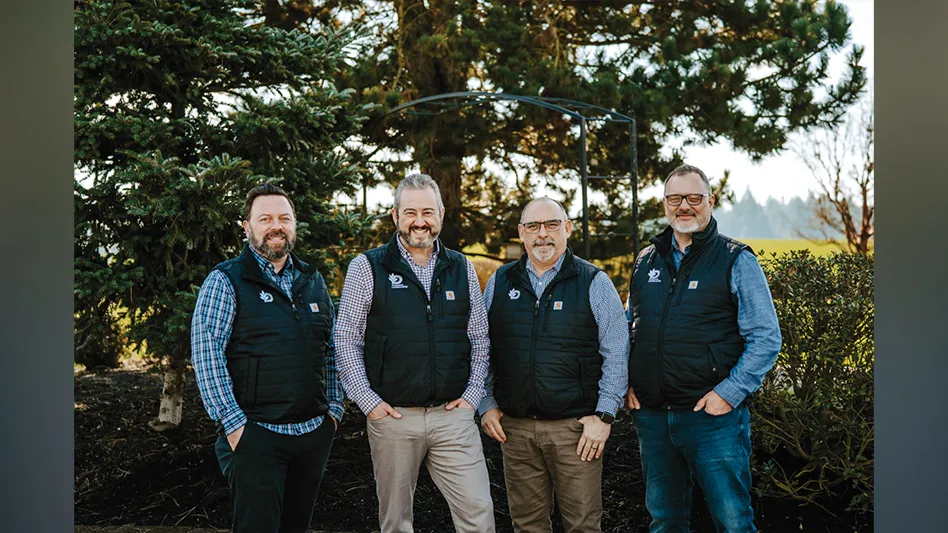In an increasingly challenging business environment, lawn care companies look for every opportunity to reduce expenses. One money-saving strategy is combination applications, which allow companies to apply herbicide, fungicide or insecticide simultaneously with their fertilizer. This two-in-one approach equates to one less trip to the customer’s property and one less trip across the lawn.
|
|
|
|
LET’S GET TOGETHER. A combination product is as it sounds – a granular fertilizer product with a liquid control product. The control product starts out as a concentrate in solid form before it is melted into a liquid that can be sprayed onto the outside of the fertilizer granules. And they are made with a variety of fertilizer analyses to meet your lawn care program’s needs.
Getting this control product off the fertilizer granule is critical for effective product performance, which is why some combination products, particularly insecticides, come with the directions to irrigate after application. The control product that dries on the fertilizer granule remains in concentrate form. The post-application irrigation moves the fertilizer into the soil and separates the control product.
As the granule breaks down and moves into the root zone for plant uptake, the control product goes to work. For example, a preemergent herbicide forms a weed barrier on top of the soil. And a host of university research verifies that combination products deliver comparable results to two separate applications.
SET YOUR SCHEDULE. You may think all applications should be made in combination form, but that’s not necessarily the case. Preemergent herbicide applications are well suited for combination products, particularly when you have concerns about the effects of early spring cool temperatures on liquids in your spray tanks.
Meanwhile, round two applications are typically comprised of a broadleaf herbicide along with fertilizer. The key to effective weed control here is you want the product to attach to the weed. For any granular postemergent application, you need to have the lawn wetted down before hand, which is why this application is generally not made via combination products. Most choose to spray liquid weed control and then fertilize separately, especially for the phenoxy herbicides.
This round two application is the most time-consuming application of the year, but it is also the most important for a lawn’s performance over the year. Fortunately, equipment innovations can reduce application time. Liquid fertilizer is an option for this application, but these are not slow-release products, which often lead to spiked turf growth. As a result, the fertilizer’s performance won’t line up with the six- to eight-week schedule for lawn visits most companies strive to set up.
The third application in most lawn care programs targets surface-feeding insects along with some fertilizer, and it can be made via a combination product. The lawn doesn’t have to be wet for leaf-feeding insects so long as the product gets down into the crown area. However, for grubs, be sure that the product gets watered in since grubs will feed on roots.
Some companies include a fungicide application with round four. If that’s your preference, any systemic fungicide can be used in a granular or combination application because you want those products to move through the plant. Protectant fungicides, however, are designed to coat the plant, so they don’t work well in granule form for most broad-spectrum disease-control applications.
J.B. Toorish and Brian Kelley are part of LESCO’s Tech Services Department. They can be reached at fromthefield@gie.net or at 800/321-5325 ext. 3150 to answer technical questions.

Explore the March 2007 Issue
Check out more from this issue and find your next story to read.
Latest from Lawn & Landscape
- Echo reveals blowers, mowers and more at Power-On-Athon
- Lake Zurich mayor honors Echo as green business
- Echo's sustainable regrind process
- Green Lawn Fertilizing/Green Pest Solutions names Willey as president
- ASV debuts VT-80 compact track loader
- Luke Williams joins Focal Pointe as CFO
- Ford debuts 2025 Ford F-Series Super Duty
- TCO for trimmers and edgers







